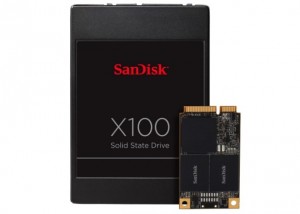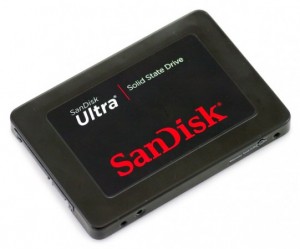SSD drives are storage devices due to the lower price of the memories NAND and are becoming popular. However, many users are watching the price / capacity one of the “cons” of these devices compared to traditional hard drives.
The market for PCs and portable storage today is divided into what could be called three main areas:
• Traditional magnetic hard drives with different ranges according to standard SATA / IDE / SAS / etc., capacity, cache and disk rotation speed, which ultimately affects the final speed read and write it.
• Hybrid hard drives with a certain amount of NAND memory to speed up its operation; becomes essentially a hard drive thanks to an optimization software moves data to its small but very fast NAND memory.
• SSD (Solid State Drive) in various formats (miniPCIe – SATA – SAS – proprietary formats) that integrate NAND as a single storage system.
The vast majority of users know the hard drives as they are the item that we sold with the tagline “terabytes”.
The ability of these devices has happened in the last years of gigabytes to terabytes (1,024 gigabytes, most manufacturers use the conversion 1,000 gigabytes, which confuses the end user). The buyer of a computer or a hard drive has just undergone a series of technicalities that anyone dizzy and the data with which you are is simply not the capacity.
Today we store files, music collections, photos, videos, movies and endless personal and professional data, software and games. This requires that capacity but obviously not the most important thing. In a traditional desktop computer with a hard disk’s magnetic lifetime of 2 Tbytes can store many files, however, how fast they can read or write data?
The technology has advanced enough for SSDs substantially improve the speed of reading and writing. These values are important, because although the capacity is critical to the end use of the device, enjoy a fast drive is something we should keep in mind. Every day we light, launch and turn off the computer, install programs, open files, load games and all these activities are affected by the configuration of the computer.
The vast majority of people would know say that extending RAM improves performance if the processor improvements all go faster, but one of the fields in which users do not notice is the improvement in the storage system. In the vast majority of cases an installation of a SSD enhances performance and feel of the user during the day with the team more than any other team expansions.
A SSD accelerates dramatically thanks to large computer transfer rates are not only high (only achievable when transferring large files) but also to the improvement in latency (time between the order of read / write is received and information read / write), which is around 0 ms versus the 10 to 12 ms of traditional hard drives.
Moreover, SSDs also offer a number of improvements when transferring small files, making the final one of the differentiators compared to hard drives. In fact, it is in this aspect and not on the maximum transfer rate in the most will win because the operating system is constantly doing readings of these files and large transfers take place only on rare occasions; by both will be a steady improvement in performance compared to traditional hard drives.
Advantages of SSD compared to HD:
• System startup, will improve, having a system that starts in a few minutes to a system that boots in seconds with SSD.
• Suspension and awaken the same team will be a nearly instantaneous process.
• Improved productivity programs open faster, games load faster, etc..
• File Transfer.
• Low power consumption, a highlight on laptops as it improves over 30 minutes of battery life.
• Less weight, equally important point in laptops.
• Less heat produced.
• No vibration or noise.
• Better resistance to small shocks and magnetism.
If a SSD is so good, why do people keep betting on the HD?
The answer to this question has several points of view but the vast majority of users committed to the basic question of HD capacity at the same price. At the same price of a SSD of 120 GB hard disk can purchase a 1 Tbyte and obviously is a factor to consider as the uses you’re going to give.
However, we have to mention that the prices of SSDs continue to drop and a hybrid configuration in which we consider an SSD for the OS and applications and a hard drive to our traditional files is becoming more and more recommended.
For little more than 57 € you can buy an SSD of 64 GB SanDisk basic range or by just over 100 € pass line SanDisk Extreme 120 Gbytes.
SSD results is so good at starting the computer and launch applications that could confirm that one of the extensions is recommended for daily use of a PC.
We’ve gone from using a netbook with hard disk and replace it with an SSD seems a new machine as well as a MacBook Pro when mounted the hard drive as secondary drive that integrated through an adapter to the DVD area, which is maintaining an optimal solution and adding the original capacity of the SSD and the performance.
The time to start is just over 15 seconds compared to over a minute and a half. Suite applications such as Open Office from Microsoft was torture, but now opens almost instantly, the notebook is loose, very loose, and the most interesting thing is to note that this improvement has been noted with one model SSD Basic market.
If you have option to try a SSD, do not hesitate, try it. Make an image of your HD on the SSD and boot from the SSD, you’ll see how your computer looks like a completely new.
This was all about SSD, what is SSD and how it is better than traditional hard drives.

